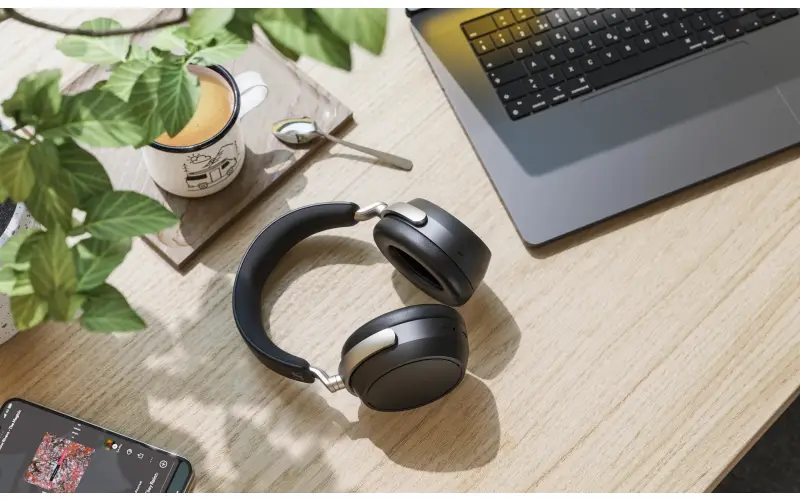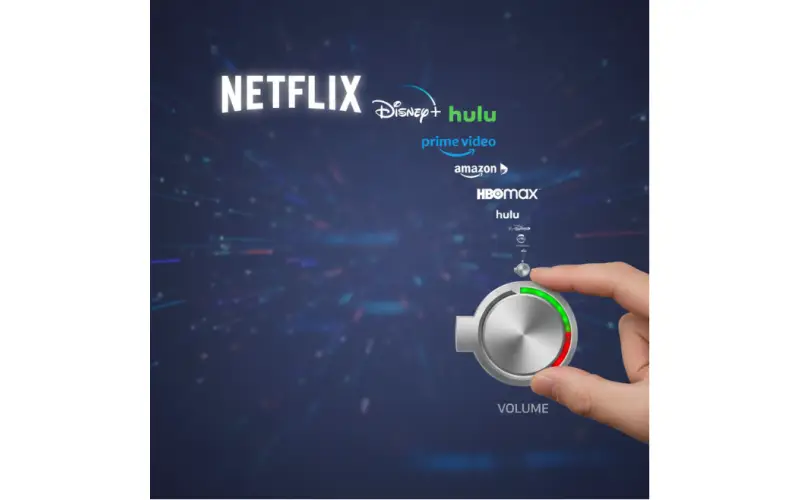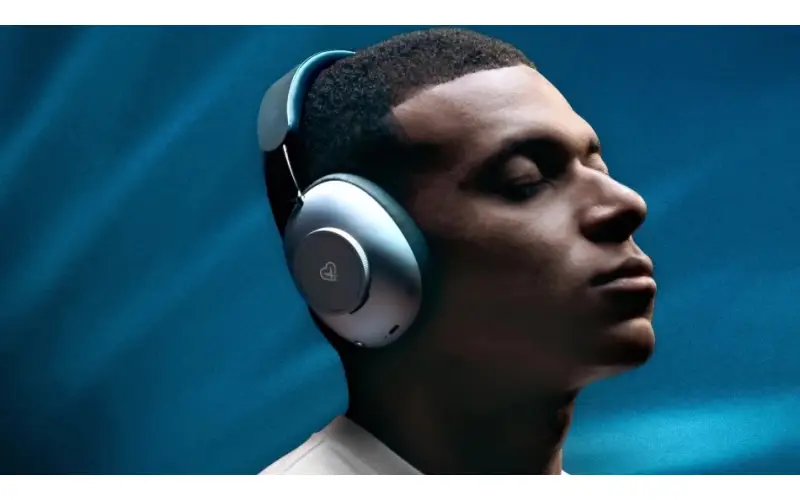By: Dipin Sehdev
In a bold and welcome step toward the fusion of technology, wellness, and music, Apple Music has launched a new feature in collaboration with Universal Music Group (UMG) called Sound Therapy. This innovative initiative leverages neuroscience, psychoacoustics, and proprietary audio technologies to enhance mental wellbeing through music — and it's exclusive to Apple Music subscribers.
Available now, Sound Therapy introduces listeners to a reimagined music experience where familiar songs are transformed using scientifically-backed audio techniques to improve focus, relaxation, and sleep. It's more than just a collection of chill playlists; it's a deeply considered project that underscores Apple’s expanding vision for health and wellness — a space where music is now taking a more intentional role.
Sound Therapy: Music Meets Mindfulness
So, what exactly is Sound Therapy?
In Apple’s own words, the feature “blends songs subscribers already know and love with special sound waves designed to enhance users’ daily routines, while retaining the artist’s original vision.” The playlists are powered by UMG’s proprietary audio technologies and developed through a rigorous process involving cognitive science, sound wave engineering, and a deep understanding of how audio affects the brain.
The launch includes three foundational playlists:
-
Sound Therapy: Focus
-
Sound Therapy: Relax
-
Sound Therapy: Sleep
Each one is tailored to stimulate particular brainwave activity using sound design techniques like auditory beats and colored noise. For example:
-
Gamma waves and white noise can help stimulate focus and concentration.
-
Theta waves are often associated with meditative states and can aid in deep relaxation.
-
Delta waves and pink noise — a softer, natural-sounding variation of white noise — are designed to promote deep sleep.
These sonic enhancements don’t override the artist’s original work. Instead, they are layered in or subtly modulated, ensuring that the emotional and artistic integrity of each track remains intact. Think of it as a remix engineered for your brain.
Backed by Science, Driven by Artistry
What makes Sound Therapy so compelling is the credibility of its origin. This isn’t a generic ambient music playlist or another run-of-the-mill sleep timer. It's the result of meticulous R&D from Sollos, a wellness-centric venture incubated inside UMG’s London HQ. Sollos brings together producers, neuroscientists, and audio engineers who collaborated to build this experience from the ground up.
Michael Nash, UMG’s EVP and Chief Digital Officer, emphasized the long-term vision behind the project:
“For years, elevating music’s role in health and wellbeing has been a strategic priority for UMG... The launch of Sound Therapy represents an important validation of our innovative, science-led Sollos initiative.”
This collaboration isn’t just lip service. The playlists include extended or instrumental versions of tracks from global stars such as Imagine Dragons, Katy Perry, Kacey Musgraves, AURORA, Ludovico Einaudi, Jhené Aiko, Chelsea Cutler, and Jeremy Zucker. These aren’t generic ambient tracks; they’re your favorite artists — but presented in a form that’s optimized for your state of mind.
Take, for instance, Katy Perry’s “Double Rainbow”, reimagined as a sleep-enhancing lullaby with gentle delta waves and soft pink noise that mimic rainfall. Or an invigorating Imagine Dragons track enhanced with gamma frequencies and white noise to block distractions and boost concentration during study sessions or deep work.
Why This Matters for Apple — and for Listeners
With the rollout of Sound Therapy, Apple Music continues its quiet but deliberate transformation into a holistic lifestyle platform. Apple has long championed wellness through products like Apple Watch, Fitness+, and HealthKit, but Sound Therapy brings a new layer of sensory immersion. It’s the company's clearest acknowledgment yet that music itself can play a therapeutic role in people’s everyday lives.
Apple Music’s co-head Rachel Newman captured the vision succinctly:
“We’re proud to work alongside UMG and Sollos to bring a new listening experience to Apple Music — one that’s grounded in artistry, shaped by innovation, and designed to support wellness.”
This initiative arrives shortly after the debut of the Apple Music Chill radio station, which offers an ongoing stream of tranquil sounds and mindful commentary. Together, these features signal a broader strategy: Apple is weaving mental wellness directly into the core Apple Music experience — no third-party apps or integrations needed.
The Tech Behind the Tranquility
Sound Therapy isn’t just a branding exercise — it’s a technical accomplishment. At its core is the use of binaural and monaural beats, frequency modulation, and colored noise to evoke specific neural responses.
Let’s break down a few of the elements that make it work:
-
Binaural beats are created when two slightly different frequencies are played into each ear. The brain interprets the difference as a third tone, which can influence mental states like relaxation, alertness, or deep sleep.
-
Monaural beats, on the other hand, mix the frequencies before they reach the ears — useful for listeners without headphones.
-
White noise is a combination of all sound frequencies, often used to mask environmental distractions.
-
Pink noise is a more natural, soothing sound (think rainfall or wind) with equal energy across octaves, shown in studies to help deepen sleep.
-
Gamma (30–100 Hz), theta (4–8 Hz), and delta (0.5–4 Hz) wave modulations have all been studied for their impact on cognitive and emotional states.
Importantly, this audio wizardry is embedded directly within each track. Users don’t need to activate a special mode — just hit play.
A Natural Fit for the Wellness-First Generation
Whether it’s ambient noise apps, meditation podcasts, or ASMR videos, today’s listeners are already incorporating sound into their wellness routines. What Apple and UMG are doing here is formalizing and elevating that trend.
The beauty of Sound Therapy lies in its accessibility. It requires no extra hardware or subscriptions beyond a standard Apple Music plan — which starts at $10.99/month (or $5.99 for students). And it doesn’t require users to “learn” how to meditate or journal; they just choose a playlist, press play, and let the music do the work.
That simplicity could make Sound Therapy one of Apple Music’s stickiest features yet — particularly among users already engaged with sleep tracking, mindfulness apps, or productivity tools.
Bridging the Gap Between Art and Science
The Sound Therapy initiative shines a light on the evolving role of music — not just as entertainment but as a tool for emotional regulation, cognitive optimization, and personal wellbeing. In the same way that music has long been used in hospitals, therapy sessions, and meditation retreats, Apple and UMG are now bringing that experience to the mainstream.
This partnership may also serve as a blueprint for the music industry’s next frontier: reimagining back catalogs not just for remastering or surround sound but for wellness-enhanced listening.
And for artists, this opens new doors — allowing their work to reach audiences not only through albums or live shows but through daily rituals of wellness and care.
What We’d Love to See Next: A Hi-Fi Wellness Experience
While Sound Therapy is a brilliant move, there's one area where Apple could go further — especially for the hi-fi audio community.
Imagine a Lossless or Hi-Res Audio version of Sound Therapy, designed specifically for listeners using high-end gear — headphones like the Meze Empyrean II or Focal Bathys, paired with DACs and amplifiers. For many audiophiles, the emotional and physical benefits of music come not only from frequencies and waveforms, but from acoustic fidelity — the texture of a plucked string, the space between notes, the warmth of analog textures.
Such a feature could merge Apple Music’s existing Spatial Audio, Hi-Res Lossless, and Sound Therapy capabilities into a single, premium wellness tier — a move that would satisfy both wellness seekers and audio purists alike.
This is especially relevant given Apple's hardware ecosystem, from AirPods Max to HomePods to upcoming audio innovations rumored to be in development. A Hi-Fi wellness experience would feel right at home in that lineup.
Final Thoughts: A Sound Step Forward
With Sound Therapy, Apple Music has delivered one of its most thoughtful and user-centric features to date. It's not just about better playlists — it’s about better living through music.
By combining artistic integrity with scientific rigor, Apple and UMG are helping to redefine what music streaming can be. This isn’t just background sound; it’s sonic wellness—a personalized, purpose-driven approach to audio that’s as therapeutic as it is entertaining.
We’d love to see this feature grow — perhaps with additional categories (like “Mood Boost” or “Energy”), greater personalization based on time of day or Apple Watch metrics, and yes, a hi-fi tier for audiophile wellness.
But as it stands, Sound Therapy marks a powerful evolution for Apple Music. It’s a reminder that in a world full of noise, sometimes the right sound — played with intention — can make all the difference.





